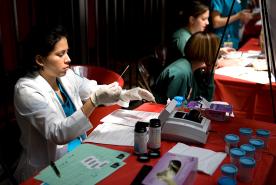March 20, 2018
By Jenise Stephen, Pharm.D
It’s that time of year again — the weather is slowly warming up and the days are getting longer! Despite what the temperature outside may indicate, spring has officially arrived. And with the new season comes that time-honored ritual–spring cleaning.
Chances are, if you open up your medicine cabinet, you’ll find some old prescription bottles or maybe some leftover medication that “might come in handy someday.” In actuality, those medications may have expired and may cause more harm than you realize.
It’s important to extend spring cleaning to your medicine cabinet and here are 6 tips to get you started:
Your local pharmacy, police department or Drug Enforcement Agency may also be able to assist in disposing of medication in a safe manner.
- Check the dates. Examine everything in your medicine cabinet, including ointments, supplements and vitamins. Discard any item that is beyond the expiration date. Many medications lose their effectiveness after the expiration date. Some may even be toxic.
- For prescriptions, follow the one year cut off rule. Discard any prescription medications that are more than one year old.
- Ditch any items that have changed color, smell or taste. This includes any colors that have faded, because they may have been exposed to too much light.
- Discard unmarked containers. If something is no longer in its original container and cannot be identified, get rid of it. In the future, try to always keep medications in their original containers so that you can easily recognize every medication. This includes ointments, since these can easily be mistaken for creams.
- Be careful about throwing out medication. Because of the potential harm to the environment, it is not recommended to simply throw out medication or flush them down the toilet. Here’s what to do:
- Place all medication in a sealable bag. If there are solid medications, add some water so they can dissolve.
- Add kitty litter, coffee grounds, saw dust, or any material that mixes well and makes it unappealing for children or animals to eat.
- Seal the bag and put it in the trash.
- Remove any identifying information on the prescription bottle (like the label), clean and recycle.
- Consider relocating your medicine cabinet. Many people don’t realize that the bathroom cabinet is not the best place to store medication. The temperature and humidity changes that take place while the shower is running can lower the potency of your medication. Medications should be kept in a cool dry place, away from children. Consider a drawer in your dresser or a lock box in your closet.









